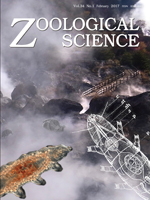We examined geographic variations of absolute and relative lower molar sizes (size proportions among M1, M2, and M3) in the Japanese macaque (Macaca fuscata) using skull specimens obtained from 13 locations. We compared the geographic patterns and climatic factors. The size of M1 significantly and negatively correlated to the annual and coldest month mean temperatures and precipitation for both males and females. The M2/M1 and M3/M1 scores significantly and positively correlated to the annual and coldest month mean temperatures. The geographic pattern in the size of M1 was consistent with Bergmann's rule; however, the sizes of M2 and M3 did not correlate with temperature, and were not consistent with the rule. The geographic pattern in relative molar sizes (M2/M1 and M3/M1 scores) indicated that populations living in colder climates possess a larger M1 in relation to M2 and M3. Therefore, the correlations of M1, M2/M1, and M3/M1 scores to temperature involve an increase in the size of M1 in a colder climate. In macaques, the functions of the different molars (M1, M2, and M3) do not differ (they all exhibit grinding function, unlike differentiation between carnassial and other molars in Carnivora), whereas the timing of molar eruption does. In other words, at young ages (1.5–3.5 years), M1 erupts and is in occlusion, whereas M2 and M3 do not erupt and are not used for mastication. Therefore, the geographic pattern in the relative molar sizes may be attributed to increasing survivability in harsh winter climates by increasing occlusal surface in younger animals.
How to translate text using browser tools
1 February 2017
Geographic Variation of Absolute and Relative Lower Molar Sizes in the Japanese Macaque (Macaca fuscata: Primates, Mammalia)
Masakazu Asahara,
Yuichiro Nishioka
ACCESS THE FULL ARTICLE

Zoological Science
Vol. 34 • No. 1
February 2017
Vol. 34 • No. 1
February 2017
Climate
dental morphology
evolution
growth
inhibitory cascade




